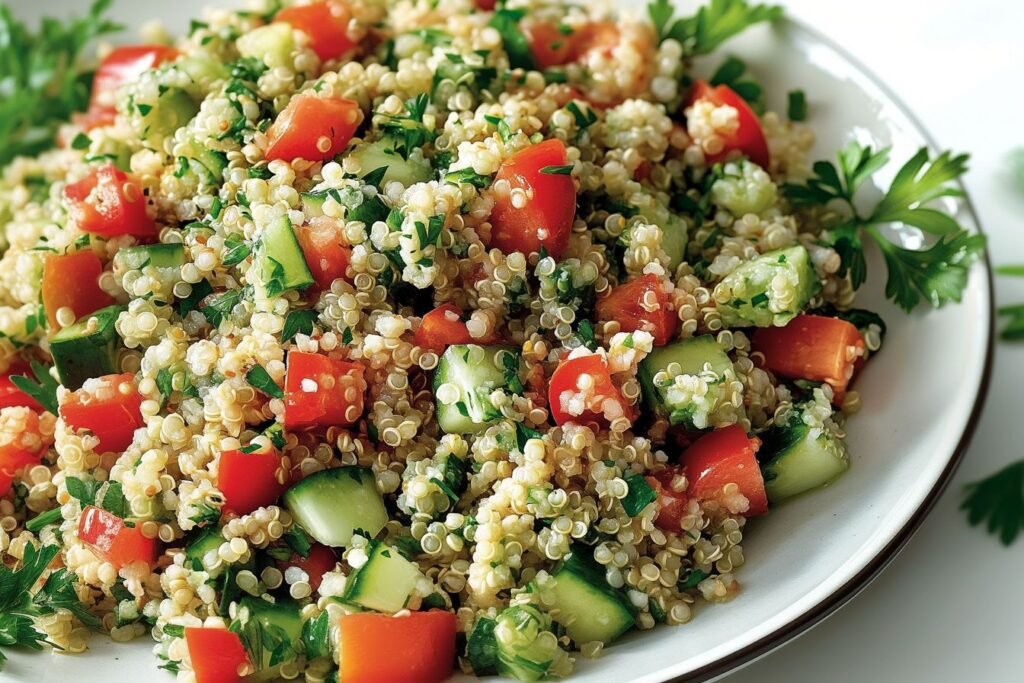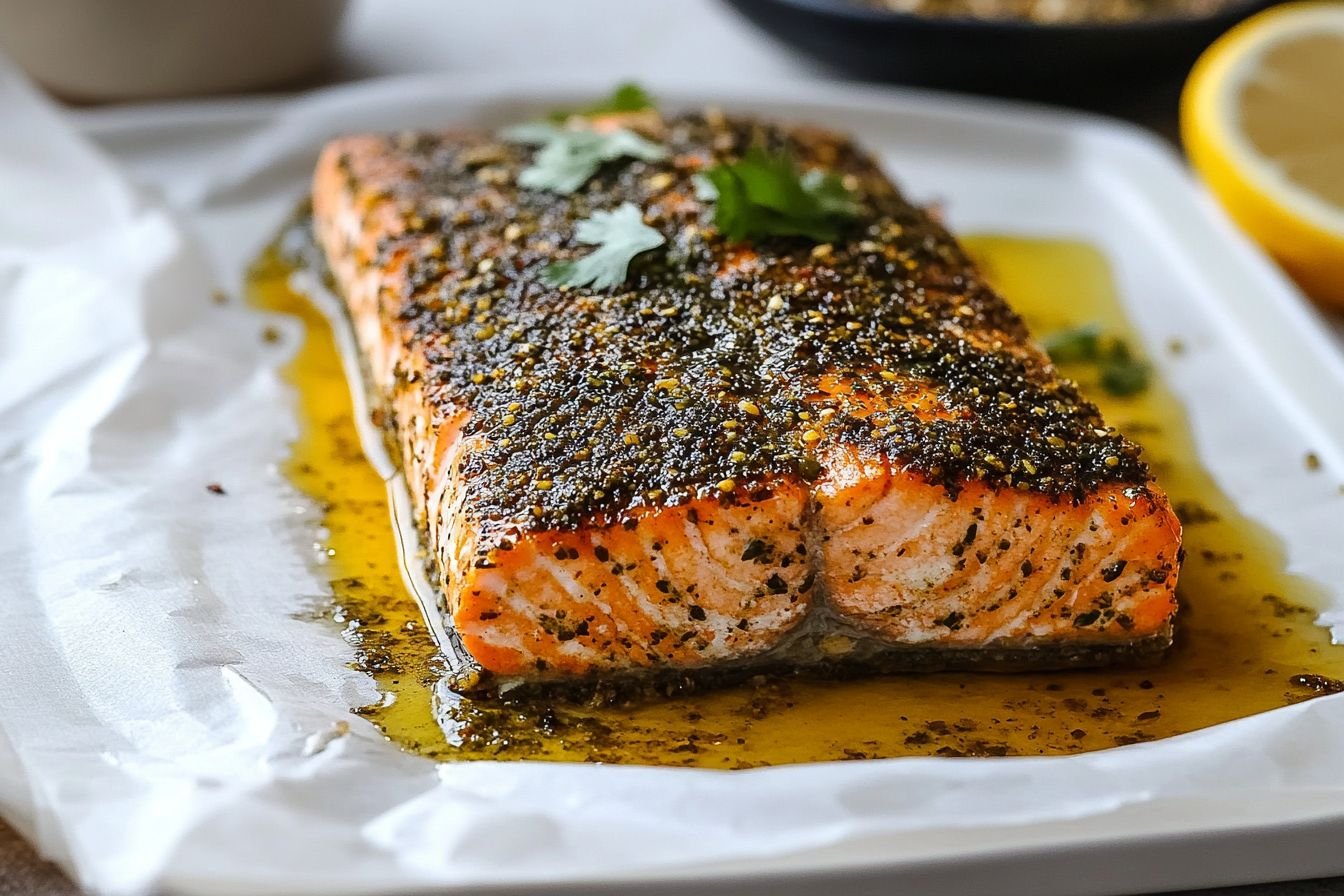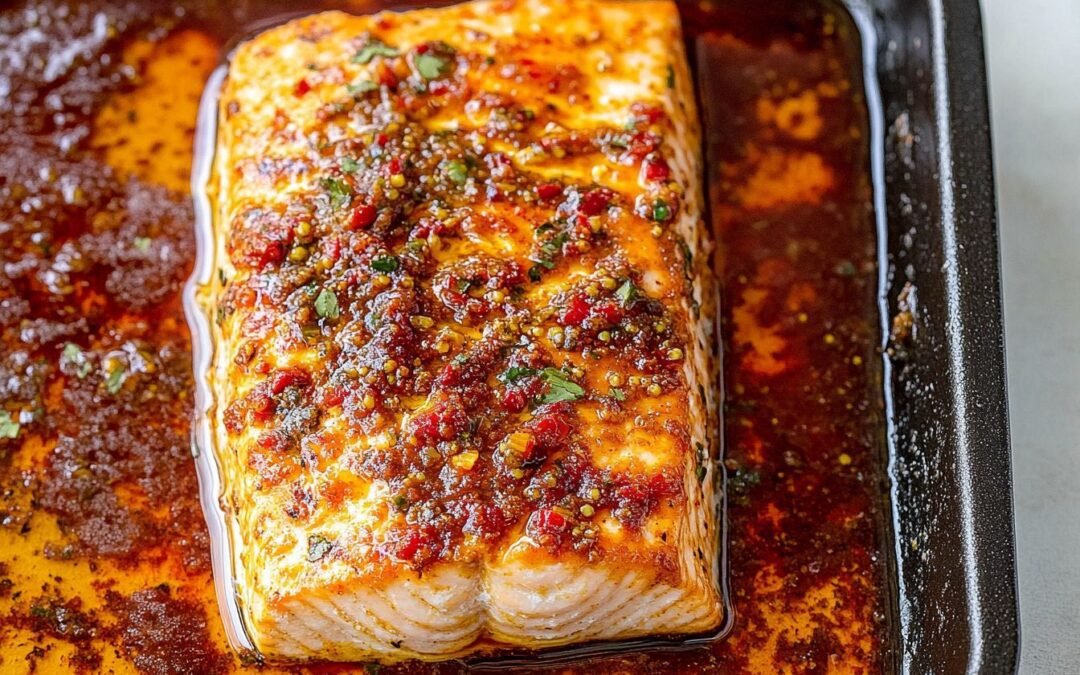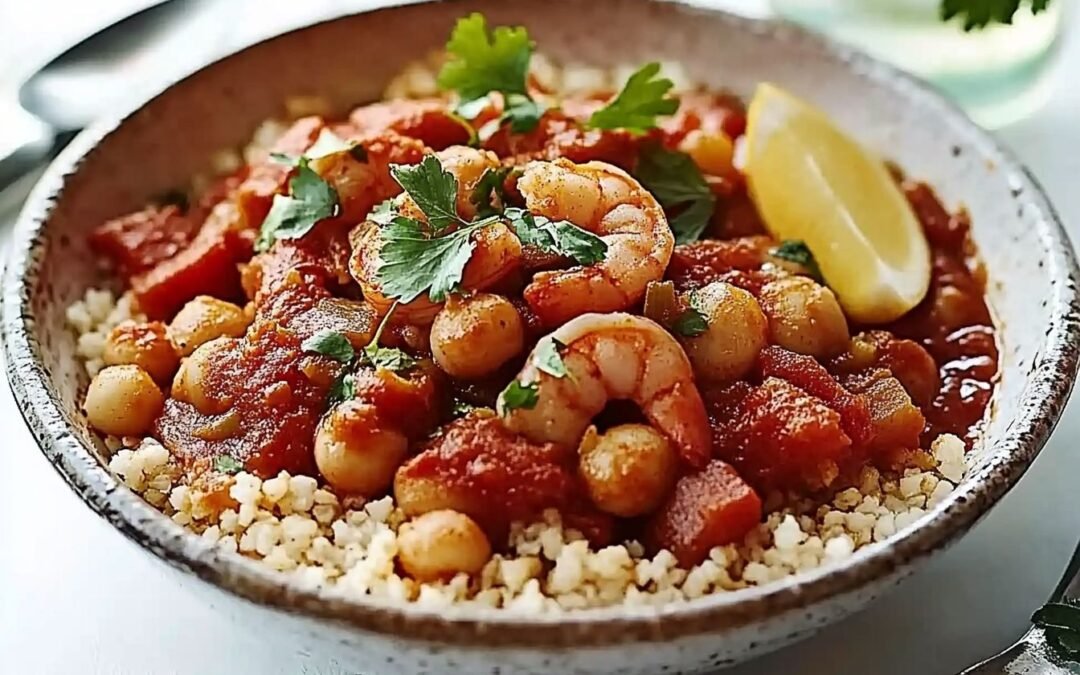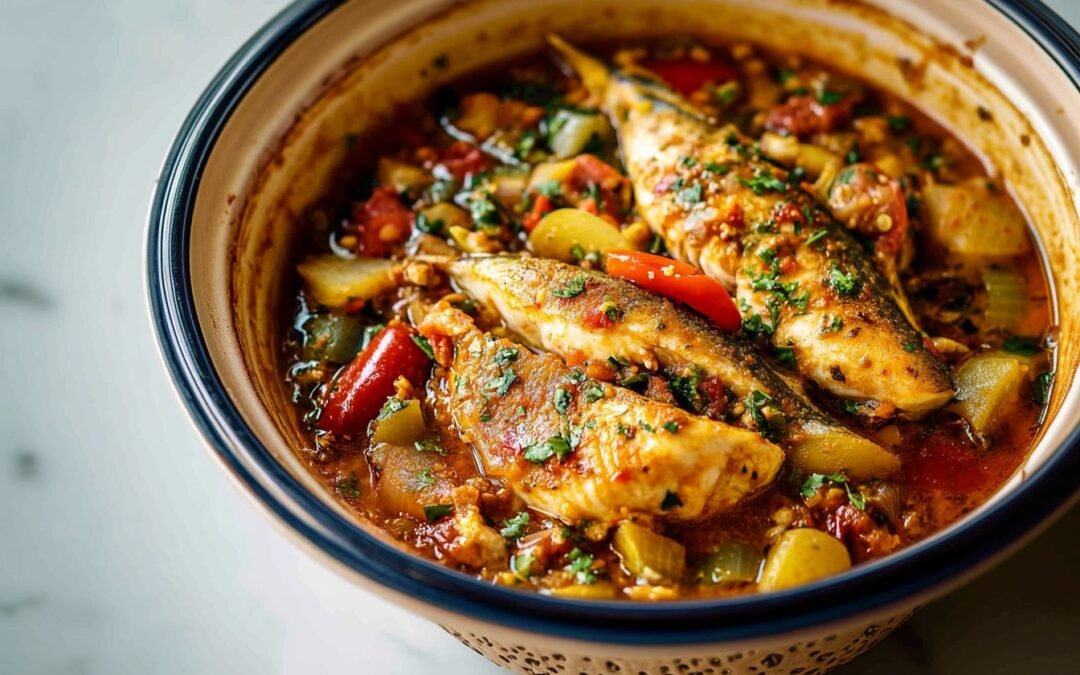Za’atar crusted salmon represents a sophisticated fusion of Middle Eastern flavors and Mediterranean cooking techniques, offering a modern twist on traditional ingredients that honors both culinary traditions while creating something distinctly new. This innovative dish pairs the aromatic, herbaceous za’atar spice blend—a cornerstone of Levantine cuisine—with omega-rich salmon, creating a flavorful crust that infuses the fish with the distinctive taste of the Middle East while maintaining the natural richness of the salmon.
The marriage of za’atar—typically a mixture of dried thyme, oregano, marjoram, sumac, sesame seeds, and salt—with the buttery texture of salmon creates a harmonious balance of flavors and textures. The earthy, tangy notes of the spice blend complement the fish’s natural sweetness, while the toasted sesame seeds add a pleasant crunch to contrast with the tender flesh of the salmon. A touch of lemon brightens the dish, cutting through the richness and enhancing the herbal notes of the za’atar.
This cross-cultural creation offers a delightful sensory experience and impressive nutritional benefits, combining the heart-healthy omega-3 fatty acids of salmon with the antioxidant-rich herbs and spices of the za’atar blend. With ingredients including fresh salmon fillets, za’atar spice blend, lemon, garlic, olive oil, and honey, the dish delivers a sophisticated yet accessible dish that bridges culinary traditions while providing a nourishing, flavorful meal suitable for both everyday dining and special occasions.
History of the Classic Dish
Za’atar traces its ancient roots to the Levant region, which includes present-day Lebanon, Syria, Jordan, and Israel. The word “za’atar” denotes both the traditional spice blend and the wild thyme herb (Origanum syriacum), which forms the blend’s base. Archaeological evidence suggests that thyme and other herbs in za’atar have been harvested in the region for thousands of years, with some scholars believing that references to hyssop in the Bible may refer to the za’atar herb.
Za’atar holds significant cultural importance beyond its culinary applications. In various Middle Eastern traditions, it has been associated with mental acuity and memory enhancement. Lebanese parents would often encourage their children to eat za’atar before exams, believing it would make them smarter. The blend also has a long history of use in traditional medicine, where it was prescribed for respiratory ailments, digestive issues, and as a general tonic.
Traditionally, za’atar is used in numerous ways throughout Middle Eastern cuisine. Perhaps its most iconic preparation is manakish (also spelled manaqish or man’oushe), a flatbread topped with za’atar mixed with olive oil, popular as a breakfast food throughout the Levant. Za’atar is also commonly sprinkled on labneh (strained yogurt), used as a seasoning for meats and vegetables, or simply mixed with olive oil as a dip for bread.
As with many fusion dishes, za’atar crusted salmon can be seen as part of the ongoing evolution of global cuisine—a respectful borrowing across culinary traditions that creates something new while acknowledging its diverse origins. In this way, the dish represents not just a delicious meal but a tangible example of cultural exchange and culinary creativity.
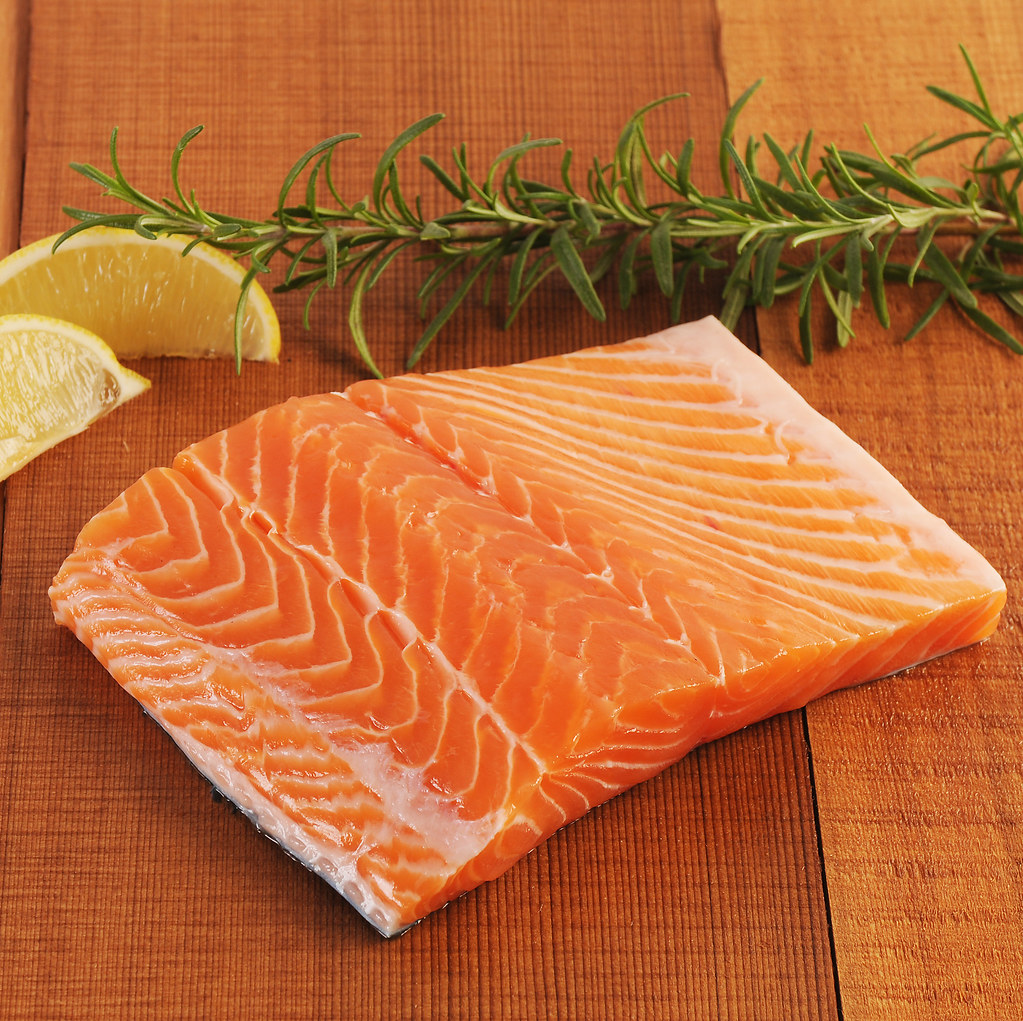
Ingredients
- 4 salmon fillets (about 6 oz each), skin on
- 3 tablespoons za’atar spice blend (store-bought or homemade)
- 2 tablespoons olive oil, plus more for drizzling
- 1 tablespoon honey
- 2 cloves garlic, minced
- 1 lemon, zested and cut into wedges
- 1 teaspoon sea salt
- 1/2 teaspoon freshly ground black pepper
- 2 tablespoons fresh parsley, chopped (for garnish)
How To Make Za’atar-Crusted Salmon?
-
Preheat your oven to 400°F (200°C). For ease of cleanup, line a baking sheet with parchment paper or aluminum foil.
-
Achieve optimal crust adhesion by thoroughly patting the salmon fillets dry with paper towels. This critical step also promotes even cooking.
-
In a separate vessel, create an emulsified paste by combining olive oil, honey, minced garlic, lemon zest, salt, and pepper. Ensure all components are well incorporated.
-
Position the salmon fillets skin-side down on the prepared baking sheet. Coat the top and sides of each fillet (by using a brush) with the prepared olive oil mixture.
-
Generously distribute the za’atar spice blend evenly over the surface of each salmon fillet. Gently press the za’atar into the fish to form a cohesive crust.
-
Allow the seasoned salmon to rest at room temperature for 10-15 minutes. This resting period facilitates flavor integration and mitigates temperature shock during cooking, leading to more uniform results.
-
Enhance the aromatic qualities and promote a slight crispness by drizzling a modest amount of additional olive oil over each fillet.
-
Transfer the baking sheet to the preheated oven and bake for 12-15 minutes. The precise duration will depend on the thickness of the fillets and the desired level of doneness. For a medium-rare to medium internal temperature, aim for 125-130°F (52-54°C). For well-done salmon, the target internal temperature is 140°F (60°C).
-
Assess doneness by checking for easy flaking with a fork, while ensuring the center remains moist and slightly translucent for a medium finish.
-
Upon removal from the oven, allow the salmon to rest for 2-3 minutes. This crucial resting period allows for the redistribution of internal juices, resulting in a more succulent final product.
-
For a touch of freshness, garnish with finely chopped parsley and serve alongside lemon wedges to allow for a bright, citrusy finish.
Nutritional Information
| Nutrient | Amount per serving |
| Calories | 320 |
| Total Fat | 19g |
| Saturated Fat | 3g |
| Cholesterol | 85mg |
| Sodium | 450mg |
| Total Carbohydrates | 7g |
| Dietary Fiber | 2g |
| Sugars | 4g |
| Protein | 34g |
Based on a 6-oz salmon fillet with za’atar crust.
Serving and Pairing Suggestions
Pairing
For an authentic Middle Eastern presentation, serve the salmon on a bed of jeweled rice pilaf, studded with dried fruits, nuts, and fresh herbs. The sweetness of the rice complements the savory, tangy notes of the za’atar crust, while providing a visually stunning base for the salmon. Alternatively, place the salmon atop a smear of labneh (strained yogurt) seasoned with lemon zest and garlic, creating a cool, creamy counterpoint to the warm, spiced fish.
For a lighter approach, pair the salmon with a traditional fattoush salad—a bread salad featuring toasted pita, cucumber, tomatoes, and herbs dressed with sumac and olive oil. The bright, fresh flavors and varied textures of the salad provide a perfect complement to the rich salmon, while the shared use of sumac (a component of za’atar) creates a harmonious flavor connection between the dishes.
Serving
When serving it as part of a larger spread, consider these Middle Eastern-inspired accompaniments:
- Roasted vegetables such as eggplant, bell peppers, and zucchini, finished with a drizzle of tahini sauce
- Tabbouleh or quinoa salad with plenty of fresh herbs and lemon
- Warm flatbreads or pita for scooping up any fallen za’atar crust
- A simple cucumber-yogurt salad with mint and a touch of garlic
- Hummus or baba ganoush for additional protein and complementary flavors
Temperature considerations can enhance the dining experience. It is best served warm rather than piping hot, allowing the flavors of the spice crust to fully develop. If preparing in advance, slightly undercook the salmon, then gently reheat it just before serving to prevent overcooking.
For a complete Middle Eastern-inspired meal, consider starting with mezze such as hummus, olives, and stuffed grape leaves, followed by this salmon dish as the main course, and concluding with a light dessert such as fresh fruit with honey and pistachios or a delicate rosewater-scented pudding.
Storing and Reheating
Immediate Storage (Within 2 Hours of Cooking): Allow the salmon to cool to room temperature, but don’t leave it out for more than 2 hours for food safety reasons. Once cooled, place the salmon in an airtight container. For best results, place a piece of parchment paper on top of the za’atar crust before sealing the container to help preserve the crust’s texture. Refrigerate promptly.
Refrigeration Guidelines: Properly stored, cooked salmon will keep in the refrigerator for up to 3 days. However, for the best flavor and texture, try to consume it within 1-2 days. The za’atar crust may soften during storage, but it will still provide excellent flavor.
Freezing Considerations: While it’s possible to freeze cooked salmon, the texture and flavor are best when the dish is consumed fresh or after refrigeration. If you must freeze it, wrap each portion tightly in plastic wrap, then in aluminum foil, and place in a freezer-safe container or bag. Label with the date and use within 1-2 months.
When ready to use frozen salmon, thaw overnight in the refrigerator rather than at room temperature to maintain food safety. Be aware that the texture of the fish may change somewhat after freezing, becoming slightly softer, and the za’atar crust will likely lose some of its distinctive texture.
Reheating Methods:
1. Gentle Oven Reheating (Preferred Method):
- Preheat your oven to 275°F (135°C)—this low temperature helps prevent overcooking.
- Place the salmon on a baking sheet lined with parchment paper.
- Lightly brush the salmon with olive oil or cover it with a piece of parchment paper to help retain moisture.
- Heat for approximately 15 minutes, or until the internal temperature reaches 125-130°F (52-54°C).
- For extra moisture, place a small oven-safe dish of water in the oven alongside the salmon to create a gentle steam environment.
2. Stovetop Method with Steam:
- In a skillet with a tight-fitting lid, add a few tablespoons of water or broth.
- Place the salmon in the skillet, skin-side down.
- Cover and heat over medium-low heat for about 5-6 minutes, or until warmed through.
- The steam created helps prevent the salmon from drying out.
3. Microwave Method (Quick Option):
- While not ideal for preserving texture, if you’re short on time, the microwave can work.
- Place the salmon on a microwave-safe plate.
- Place a damp paper towel over it to help keep it moist.
- Heat on 50% power for 30 seconds at a time, checking after each interval until just warmed through.
- Be careful not to overheat, as this will quickly dry out the salmon.
Common Mistakes To Avoid
- Using low-quality or old za’atar: The spice blend is the star of this dish, so using fresh, high-quality za’atar is essential. Old za’atar loses its aromatic qualities and can taste dusty or flat. If possible, purchase za’atar from a specialty store with high turnover, or make your fresh blend using quality dried herbs.
- Overcooking the salmon: Salmon continues to cook after being removed from the heat source, so it’s better to slightly undercook than overcook. For a medium doneness with a moist, tender center, remove the salmon from the oven when the internal temperature reaches 125-130°F (52-54°C). The fish should flake easily but still have a slightly translucent center.
- Not letting the salmon rest: Skipping the resting period after cooking causes the juices to run out when the fish is cut, resulting in drier salmon. Allow the salmon to rest for 2-3 minutes after removing it from the oven to let the juices redistribute throughout the fish.
- Using salmon straight from the refrigerator: Cold salmon placed directly in a hot oven will cook unevenly, with the outside potentially overcooking before the center is done. Let the salmon sit at room temperature for 15-20 minutes before cooking for more even results.
- Neglecting the skin: Even if you don’t plan to eat the skin, cooking salmon with the skin on helps protect the delicate flesh from drying out and provides a natural barrier against the hot baking sheet. Always place the salmon skin-side down when baking.
- Forgetting the acid component: Za’atar has earthy, savory notes that are beautifully brightened by acid. Forgetting to include lemon zest in the crust mixture or to serve lemon wedges alongside the finished dish misses an opportunity to enhance the overall flavor profile.
Conclusion
Za’atar crusted salmon represents a thoughtful fusion of Middle Eastern flavors and Mediterranean cooking techniques, creating a dish that honors both culinary traditions while offering something distinctly new. This creative pairing demonstrates how traditional ingredients can be reimagined in contemporary contexts, bridging cultural culinary practices to create dishes that are both innovative and respectful of their origins.
The success of this dish lies in the natural affinity between the herbaceous, tangy za’atar blend and the rich, buttery texture of salmon. The earthy notes of thyme, oregano, and marjoram in the za’atar complement the salmon’s natural sweetness, while the bright acidity of sumac cuts through the fish’s richness. The sesame seeds provide a pleasant textural contrast to the tender flesh, creating a multidimensional eating experience that engages all the senses.
The versatility of this dish further enhances its appeal. It transitions seamlessly from casual weeknight dinners to elegant entertaining, and can be adapted to suit various dietary preferences and seasonal ingredients. The basic technique—creating a flavorful crust on salmon with za’atar—provides a foundation that can be personalized through accompanying sides, sauces, and presentation styles.
In addition to the above, another delicious pairing is quinoa tabbouleh.
Sounds good? Get the recipe now (by clicking the image below):
